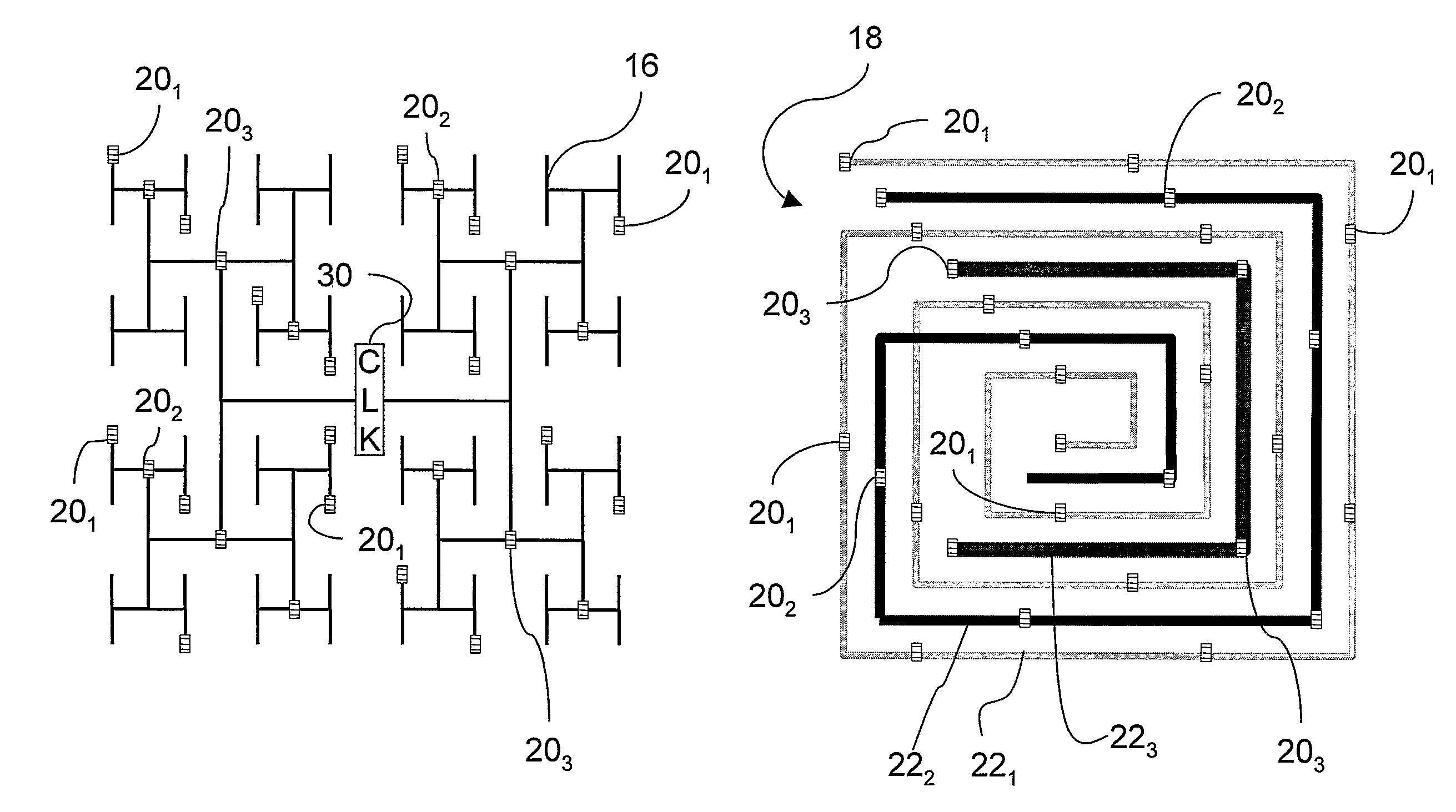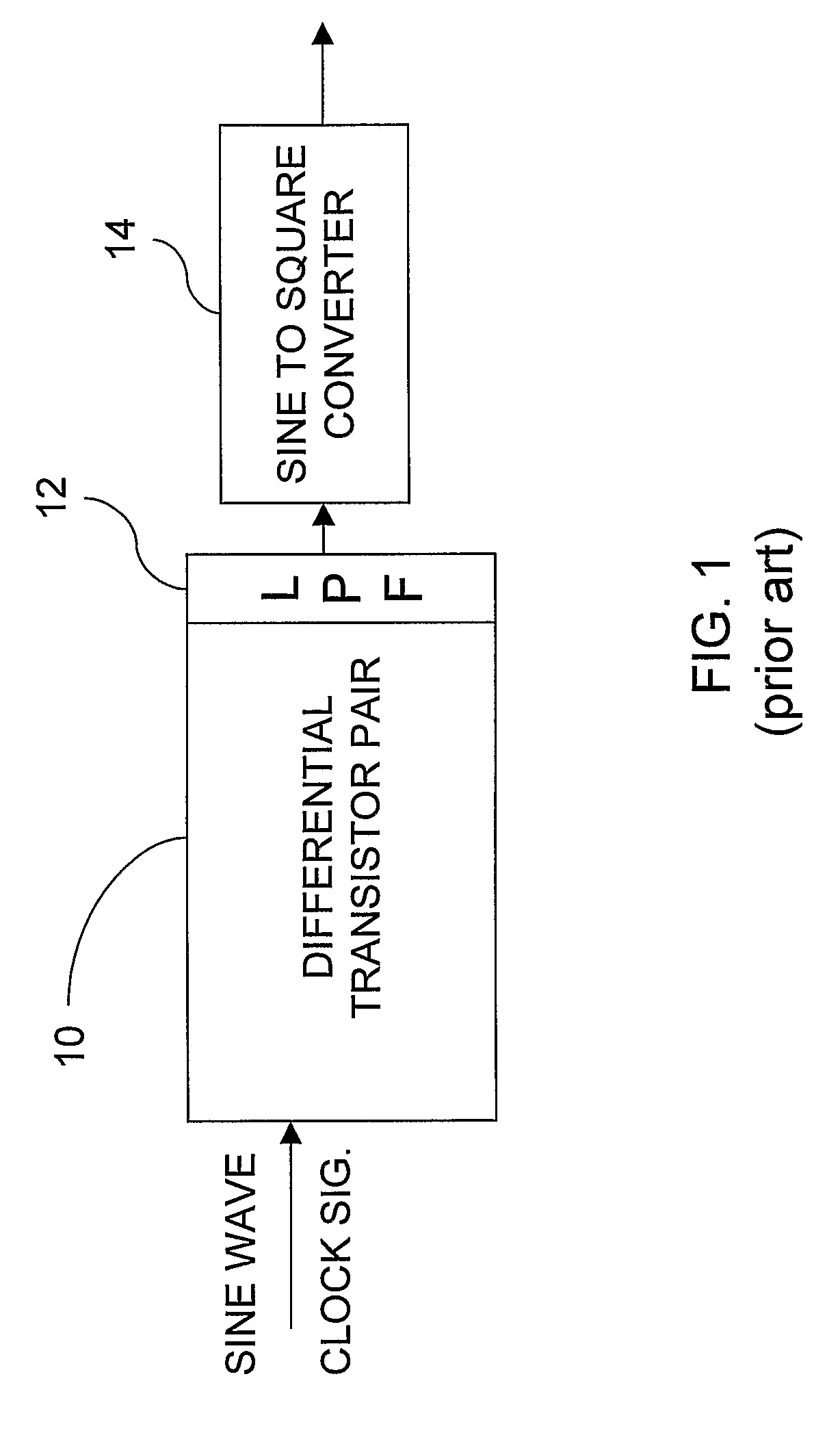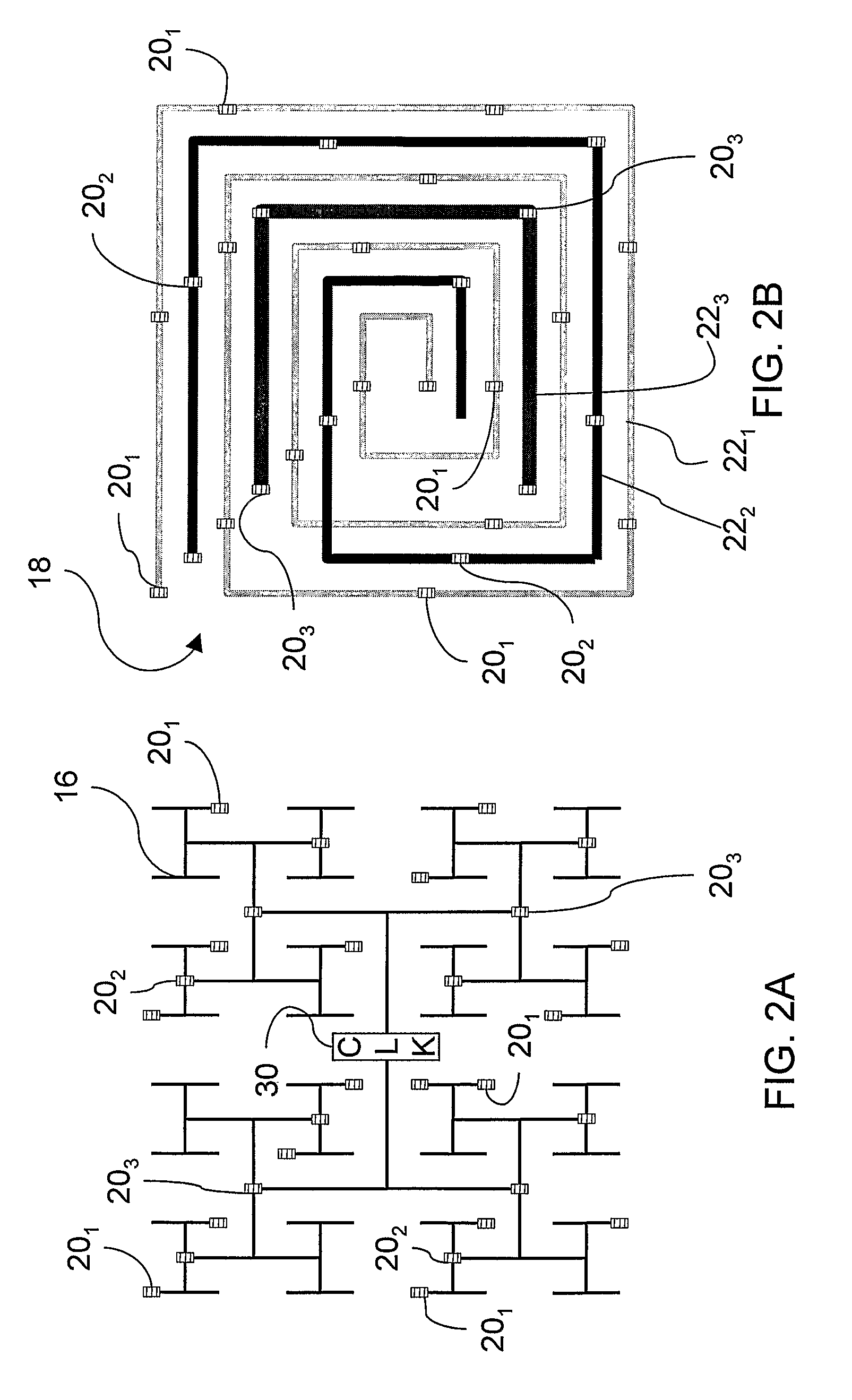High speed clock distribution transmission line network
a transmission line network and high-speed clock technology, applied in the field of vlsi, can solve the problems of consuming a significant portion of the clock period, skew can be a limiting factor, and the design of a robust global clock distribution system which can sustain various parameter variations becomes increasingly difficult and time-consuming
- Summary
- Abstract
- Description
- Claims
- Application Information
AI Technical Summary
Benefits of technology
Problems solved by technology
Method used
Image
Examples
Embodiment Construction
[0017]The invention provides clock distribution methods and circuits a hybrid structure of a clock distribution tree, e.g., an H-tree, and a differential transmission line shunt to shunt a level of the clock distribution tree, or more preferably, multiple differential transmission line shunts to shunt multiple levels of the clock distribution tree. The clock is distributed as differential signals of periodic waves, e.g., sinusoidal waves. Even at high frequencies, e.g., 10 GHz and higher, the clock distribution method of the invention provides an output to levels of the clock distribution tree that exhibits very small skew. In a VLSI circuit of the invention, a square-wave clock signal is recovered locally and provided to registers all over the circuit.
[0018]In a preferred embodiment, an H-tree clock distribution circuit is shunted by transmission lines. The transmission lines are driven at discrete points and bent into spiral pattern in order to link the clock drivers of the H-tree...
PUM
 Login to View More
Login to View More Abstract
Description
Claims
Application Information
 Login to View More
Login to View More - R&D
- Intellectual Property
- Life Sciences
- Materials
- Tech Scout
- Unparalleled Data Quality
- Higher Quality Content
- 60% Fewer Hallucinations
Browse by: Latest US Patents, China's latest patents, Technical Efficacy Thesaurus, Application Domain, Technology Topic, Popular Technical Reports.
© 2025 PatSnap. All rights reserved.Legal|Privacy policy|Modern Slavery Act Transparency Statement|Sitemap|About US| Contact US: help@patsnap.com



